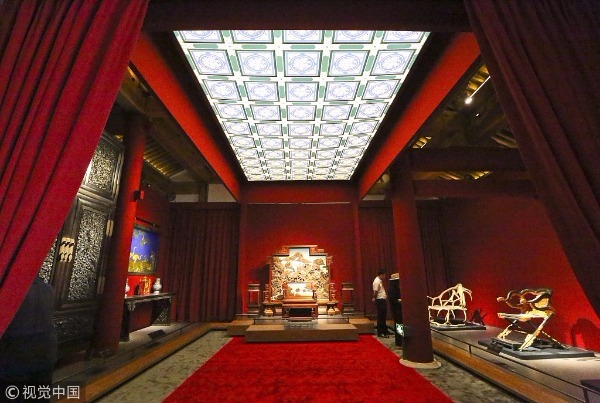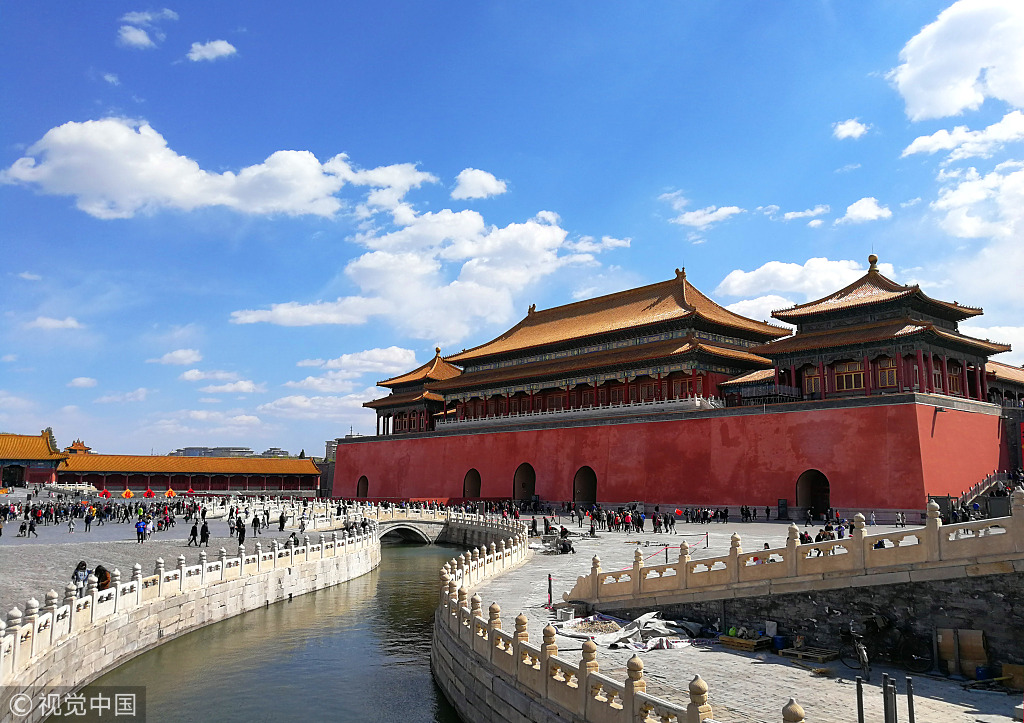 Increased digitalization spurs commercial push at venues The Palace Museum in Beijing, also known as the Forbidden City, is one of the most historically and culturally significant sites in China. Once home to emperors, it now hosts throngs of visitors each day and its merchandise is sought by many across the country and overseas. The venue also is drawing more attention in an innovative way. Among the products it offers, it has developed a range of cosmetics with packaging inspired by the Ming (1368-1644) and Qing (1644-1911) dynasties. Sales of the museum's merchandise reached 1.5 billion yuan ($223.6 million) in 2017, according to Shan Jixiang, curator and director of the museum, who spoke at the Chinese Entrepreneurs Forum in Yabuli, Heilongjiang province, in February. The success of the cosmetics line highlights a fundamental transformation at the cultural attraction, a change that is also visible at some of the world's most significant heritage sites. From its days as the epicenter of imperial China through to its transformation as a center for cultural preservation and tourist attraction, the allure of the Palace Museum has remained strong. Globally, governments have sought to protect such sites while also benefiting from them by generating revenue and using them to strengthen their tourism industries.  At the Palace Museum, lipsticks are among an array of merchandise, including phone covers and paper fans. The latter have been popular for some time. This commercial push heralds a new age for heritage sites, and has largely been prompted by increased digitalization. Will Liu, product manager at Trustworthy (Beijing) Technology Co, said institutions are using the company's services for innovative ways to tap the attention - and wallets - of millennials. Liu's company offers 3D scanning and printing services to help museums digitize their treasures. "In the past, the digitalization of a museum usually meant digital photos of the artifacts in an archive, but now everything is going 3D," Liu said. "We're also looking at museum-themed VR (virtual reality) and AR (augmented reality) video games." Liu said 3D technology brings two fundamental benefits - it is a lot more accurate than measuring by hand; and it protects the artifacts better, as there is no need to touch them or expose them to a harmful environment. "If a museum wants to develop merchandise based on an original artifact, it does not need to send the authentic piece to the developer. It can just send in the 3D data," he said. This makes it easy to transform information into products, which can help heritage institutions develop a wide range of merchandise. Savvy merchandising is just one aspect of this exercise; attracting tourists remains the main focus. When the Kaiping Diaolou, a set of fortified clock towers in Guangdong province, was designated a World Heritage Site in 2007, it was attracting about 100,000 visitors a year. Now, the aim is to draw 2 million visitors annually and generate 50 million yuan ($7.45 million) in revenue. But this talk of increased revenue and attracting more tourists also puts heritage protection at risk. Mechtild Rossler, director of the UNESCO World Heritage Centre, said institutions should stay focused on heritage protection and not get carried away by finances. "The main focus of the 1972(World Heritage) Convention remains conservation and protection, not economic or tourism growth," Rossler said. "Any economic benefits should also benefit the World Heritage properties that helped generate them and the communities living around them, and should be allocated for important conservation and/or restoration activities." However, heritage sites often need to generate more revenue to recoup the significant amount of investment needed to achieve "World Heritage" designation. Lee Ho Yin, head of architectural conservation programmes at the University of Hong Kong, said he understands the need for tourism, but warned against too much commercialization. "In the long term, overdependence on tourism will undermine a heritage site in terms of its cultural heritage and physical environment, making the site unsustainable socially, economically and environmentally," Lee said. He warned that local culture may be changed or even damaged by commercialization, while environmental risks are also greater as a result of increased pollution and consumption that generates waste. "Too many tourists increase pollution and generate waste beyond a heritage site's capacity to deal with - imagine the amount of waste a 1,000-room hotel generates every day," he said. A "tourist trap reputation" would then ultimately cause such sites to lose their appeal to tourists, who would stop coming, eventually hindering the long-term protection of these sites, according to Lee. But he also noted the practicalities of various income streams for heritage sites. "Such sites are expensive to maintain - no money, no conservation. The bigger question is: what is the proper way to make heritage sites economically sustainable?" Lee said. Rossler, at the UNESCO World Heritage Centre, said a sustainable tourism program helps with planning and heritage management so that "natural and cultural assets are valued and protected, and appropriate tourism developed". A "World Heritage" designation is often also an important asset for economic development, as it attracts investment and ensures green, local, stable and decent jobs. However, only some of these factors may be related to tourism. Lee said, "The most important benefit is the sustainable development of the community to which the heritage site belongs. "The proper way to make such a site economically sustainable is to ensure sustainable development of the local community by enabling it to proactively protect and manage the cultural and environmental resources that are essential for long-term socioeconomic sustainability." |
 |Archiver|小黑屋|丝路遗产丝绸之路:长安天山廊道的路网
( 陕ICP备07011065号-3 )
|Archiver|小黑屋|丝路遗产丝绸之路:长安天山廊道的路网
( 陕ICP备07011065号-3 )
GMT+8, 2024-4-20 11:05 , Processed in 0.310295 second(s), 21 queries .
Powered by Discuz! X3.5
© 2001-2024 Discuz! Team.